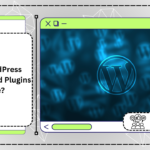WordPress is one of the most popular content management systems (CMS) in the world, powering millions of websites across various industries. However, if you’re expecting heavy traffic to your website, you might be wondering if WordPress can handle the load. In this article, we’ll explore the capabilities of WordPress when it comes to handling heavy traffic and provide some tips on how to optimize your WordPress site for high traffic situations.
Understanding WordPress’ Scalability
What Is WordPress Scalability?
WordPress scalability refers to the ability of a WordPress website to handle growth, including increased traffic, data, and complexity, without compromising performance. Given that WordPress powers a substantial portion of the web, understanding its scalability is crucial for both small and large enterprises.
Importance of Scalability
Ensuring your WordPress site can scale effectively has significant ramifications. It allows for a smooth user experience even during traffic spikes, facilitates content management by efficiently handling large volumes of data, and maintains optimal site performance. A scalable WordPress site can support future growth, which is vital for any successful online presence.
Key Factors Influencing Scalability
Several critical factors can influence the scalability of a WordPress site. These include:
Hosting Environment: Choosing the right hosting provider and plan is pivotal. Options like dedicated hosting, cloud hosting, or managed WordPress hosting can significantly impact scalability.
Database Optimization: Efficiently managing your WordPress database, such as by pruning unnecessary data and optimizing queries, can enhance performance.
Caching and CDN: Implementing caching mechanisms and using a Content Delivery Network (CDN) can mitigate server load and speed up content delivery.
Code Quality and Plugins: Ensure that your site’s codebase and plugins are optimized and free from bloat, as poorly developed plugins can hinder website performance.
Best Practices to Achieve Scalability
Here are some best practices to help your WordPress site scale smoothly:
Regular Updates: Keep WordPress core, themes, and plugins updated to benefit from performance improvements and security patches.
Monitor Performance: Utilize tools to monitor site performance and identify bottlenecks proactively.
Load Testing: Perform load testing to understand how your site behaves under stress and to identify areas needing improvement.
Optimize Images: Compress and properly size images to reduce load times and server strain.
By adopting these best practices and understanding the key components of WordPress scalability, you can ensure your website remains robust and performs optimally as it grows.
Understanding the Challenge of Heavy Traffic
Managing heavy traffic on a website can be a daunting task, but WordPress has built-in mechanisms and best practices to handle such situations gracefully. Whether you run a small blog or a high-traffic e-commerce site, understanding how WordPress handles heavy traffic ensures smooth user experience and optimal site performance.
Optimized Hosting Solutions
The foundation of managing heavy traffic lies in choosing the right hosting provider. WordPress recommends managed hosting solutions like WP Engine or Kinsta, which offer server optimizations, caching solutions, and Content Delivery Network (CDN) integrations to distribute traffic load efficiently. These managed hosting providers also offer scalability options, allowing your site to handle traffic spikes with ease.
Effective Caching Mechanisms
WordPress leverages effective caching mechanisms to reduce server load and improve load times. Plugins like W3 Total Cache and WP Super Cache store static versions of your web pages, allowing users to access content faster without repeatedly querying the database. Server-level caching provided by hosting solutions further enhances performance, ensuring your site remains responsive during peak traffic periods.
Load Balancing and Content Delivery
To handle heavy traffic efficiently, WordPress can integrate with load balancing and CDN services. Load balancers distribute incoming traffic across different servers, preventing any single server from becoming overwhelmed. CDNs cache content at multiple locations globally, reducing latency and ensuring users have quick access to your site, no matter where they are located.
Conclusion
WordPress is a powerful CMS that can handle heavy traffic when properly optimized. By following the tips mentioned above and implementing the necessary optimizations, you can ensure that your WordPress site performs well under high traffic conditions. Remember to choose a reliable hosting provider, implement caching mechanisms, optimize your database, utilize CDNs, minimize plugins and themes, optimize images, and consider implementing a content delivery system. With these measures in place, your WordPress site will be well-equipped to handle heavy traffic and provide a seamless user experience.













